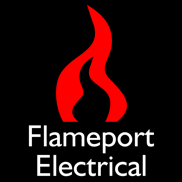How NOT to save electricity
A collection of lies which will only cost you money. No savings here at all.
Hot water cylinders
Some people are under the impression that leaving the immersion heater switched on permanently is cheaper than only switching it on when needed. Clearly nonsense. Heating up from cold will always cost the same, but even with good insulation, a cylinder full of hot water will cool down, and the heater will then switch on again to heat it. This cycle repeats endlessly.
The correct method of operation is to switch the heater on when hot water is required, and then switch it off when not needed. Alternatively fit a timer which will do this for you.
Still not convinced? Would you consider leaving your oven on 24/7 to keep it hot and ready for cooking?
Leaving lights on is cheaper
Leaving anything on will use electricity. Leaving lights on to save electricity is ridiculous.
The only reasonable explanation is that some fluorescent lights do use slightly more power to start up than they do once on. However this is a tiny difference, and if lights are not needed they should be turned off.
12V halogen downlighters are cheaper to run than 240V types
Wrong again. A 50W lamp is 50 watts, regardless of the voltage.
The 12V one does operate on 1/20th of the voltage, but has 20 times more current flowing through it. The power used is the same.
Halogen lamps do give out more light than a non-halogen lamp, so you could replace a 75W lamp with a 50W halogen and have a similar amount of light for 2/3 of the electricity.
Devices which reduce the voltage supplied to appliances
These things are installed next to your consumer unit, and reduce the voltage from a typical 240 or 250 volts to 220 volts. The sales pitch claims that most appliances are designed to work at 220V, so supplying them at 240V will waste energy.
These claims are partially correct, and the claims of lower voltages resulting in savings can seem plausible. Most modern appliances are designed for 220 or 230 volts, and the typical supply voltage in the UK is 240 or sometimes more.
However, this is where the claims of savings fall down and fail. In almost all cases, reducing the voltage supplied to appliances does not save energy.
Heating
Reducing the voltage to a heater simply means it takes longer to heat up. Therefore your kettle takes longer to boil, but the energy used remains the same. The manufaturers of these devices do state they are not suitable for heating loads and they are not intended to be connected to circuits supplying heaters. However there are many other devices containing heaters such as washing machines, dishwashers, coffee makers, kettles, toasters, popcorn makers, hair dryers and so on.
Electronic equipment
Almost all modern electronic equipment contains a switch mode power supply. These work at a whole range of input voltages (110 to 240 is common). At a lower voltage, the current drawn increases to compensate. The power used is the same, regardless of the voltage.
Lighting
Incandescent lighting, such as normal tungsten filament 'light bulbs' and halogen types will use less energy at a lower voltage. Unfortunately, they will also give out significantly less light, which just encourages people to fit higher wattages and use additional lamps to compensate.
Compact fluorescent lamps and many other fluorescent lighting units use electronic ballasts. These use the same amount of power regardless of the voltage supplied, in the same way as most electronic equipment. At lower voltages, the current increases to compensate.
Older type fluorescent lighting (long tubes and the fitting has a replaceable 'starter' in the side) may use less power at a lower voltage. It is also likely that reducing the voltage results in them not working at all.
Motors
Some motors will use less power at a lower voltage. Unfortunately, this can lead to the motor overheating and if the voltage is too low, it may not work at all. Even worse, in a domestic property, most of the power is used by heating and lighting anyway - motors inside appliances are typically small, low powered and only used for short periods.
The costs of the device itself
Even if some savings are achieved, the cost of these devices and their installation is not trivial. £250 for the devce, and at least £100 to install it. If your fusebox is old, installation could be much more.
A typical UK household will spend around £500 per year on electricity. Even saving 10% (very unlikely), this is only £50 per year, so it will be at least 7 years before any savings are made.
Saver Plugs
These are a replacement plug for your freezer or fridge. The manufaturers claim they save significant amounts of electricity. They work in a similar way to the voltage reducing deal described above.
As these plugs probably saved nothing and could reduce the life of the compressor in the fridge, these 'savaplugs' are no longer made. How very unfortunate (for the manufacturers!)
The story of the useless dual voltage hairdryer
This item was a cheap travel hairdryer, with a 240/120V switch on the handle. Presumably intended for use in different countries, although it was never actually taken anywhere with a 120V supply.
One day, the flex on this contraption was damaged and required replacement. Upon opening the casing, the 'switch' was found to be nothing more than a revolving piece of plastic with no electrical components whatsoever.
The hairdryer was in fact a standard 240V model. It would probably still work at 120V, but the heating elements would have provided far less heat, and the time taken to dry hair would have been extended considerably.
In conclusion, the only purpose for the 'dual voltage switch' was so the manufacturers could charge more money for a feature which didn't exist.


